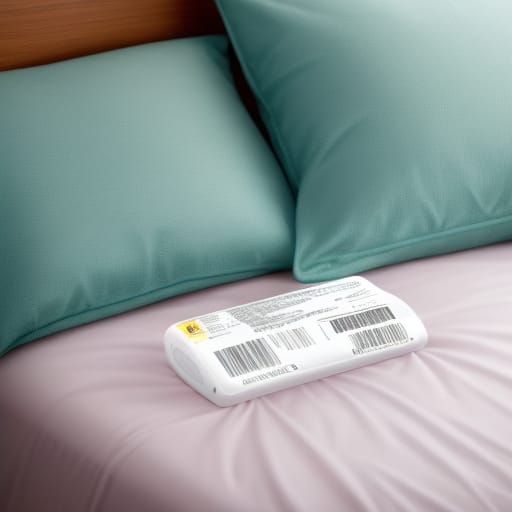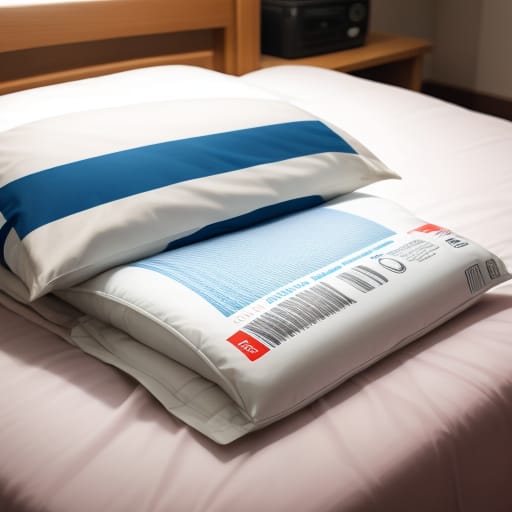When it comes to providing warmth and comfort on chilly nights, down comforters are a popular choice for many. Known for being incredibly soft and providing superior insulation compared to other fill materials, down comforters envelop you in lightweight, plush coziness as you sleep.
However, some people find that down comforters irritate their allergies or even trigger asthma attacks. This leaves many wondering: do down comforters cause allergies?
The short answer is that yes, down comforters can cause allergic reactions in those with sensitivities to the materials used. Below, we’ll explore the connection between down bedding and allergies, signs of an allergic reaction, alternative hypoallergenic comforter options, and tips for alleviating allergy issues.
What Causes Allergies in Down Bedding
Down comforters are filled with the fine, fluffy underfeathers of ducks or geese. This down filling is what gives the comforters their signature softness and loft.
On their own, the down feathers don’t contain proteins that commonly trigger allergic reactions. So what exactly in down bedding causes allergy issues?
The culprit behind down comforter allergies is largely dust mites and their waste. These microscopic creatures feed on the skin cells that flake off our bodies as we sleep.
The warm, cozy environment inside a down comforter provides the perfect home for dust mites to accumulate and multiply. As they feed off dead skin cells, they also defecate. The feces from these dust mites contain an allergenic protein called Der p 1 that commonly triggers allergic reactions, asthma flare ups, and other issues in sensitive individuals.
In addition, the fine particles in down filling can irritate lungs when breathed in, causing complications for those prone to respiratory allergies.
So in summary:
- Dust mites and their feces are the main allergen present in down comforters
- Down feathers may irritate lungs and worsen respiratory allergies
- Other allergens like pet dander can also collect in down over time
Signs You May Have a Down Comforter Allergy
Allergy symptoms can vary significantly from person to person. Some experience mild irritation when exposed to allergens, while others have much more severe responses.
Common allergy symptoms associated with down bedding include:
- Stuffy, runny nose
- Sneezing and coughing
- Itchy, watery eyes
- Facial pressure and sinus congestion
- Wheezing or difficulty breathing
- Tightness in the throat or chest
- Hives, rashes, or skin irritation
- An itchy feeling all over the body
These symptoms may arise shortly after getting into bed as you are breathing in the dust mite allergens. Or they may escalate over hours or repeated exposure to a down comforter.
If your allergy symptoms seem to worsen at night or when settling into bed – especially during colder months when you layer on the bedding – it’s possible your down comforter could be to blame.
Should You Switch to a Synthetic Comforter?
If your down comforter is aggravating allergies, it may be time to consider alternatives. Many people find relief by switching to synthetic comforters instead.
Synthetic comforters are filled with polyester fibers or other hypoallergenic synthetic materials. With proper construction, they can mimic the lightweight warmth, loft, and softness of down comforters, while eliminating allergy triggers.
Most synthetic comforters are specially engineered to resist dust mites, mold, mildew and other allergens and irritants. Some feature antimicrobial treatments for added protection. They are also easier to keep clean.
Options range from budget-friendly to luxury:
When shopping for an alternative down comforter, look for ones clearly labeled as:
- Hypoallergenic
- Anti-allergen
- Dust mite resistant
- Mold/mildew resistant
Pay close attention to the filling used, if it has any special coatings or treatments, the outer fabric, washing recommendations, and care instructions.

Tips for Managing Down Comforter Allergies
If you love your down comforter and want to make it work, try these proactive tips to minimize allergy issues:
- Use a mattress protector and pillow encasements: Creating barriers around your bed prevents dust mites and skin cells from accumulating as quickly in bedding.
- Wash bedding weekly in hot water: Frequent hot water washing kills dust mites and removes allergens. Use allergen-friendly detergents.
- Dry clean down comforters 2-3 times per year: Dry cleaning effectively sanitizes and removes particulates without damaging delicate down.
- Use hypoallergenic sheets and pillow cases: Choose smooth, tightly-woven fabrics like percale that offer less space for allergens to collect.
- Vacuum and dust frequently: Removing dust and dander minimizes allergen triggers.
- Consider air purifiers and dehumidifiers: Regulating humidity below 50% helps inhibit dust mite growth. HEPA air filtration captures allergens.
- Get allergy covers: Downproof cotton comforter covers add protection while retaining fluffiness.
- See an allergist: Allergy testing can identify specific triggers to target and inform treatment options.
Creating an overall allergen-free sleep environment goes hand in hand with minimizing down bedding irritation. Addressing multiple factors helps reduce allergy attacks over time.
When to Seek Medical Care
For most people, switching to synthetic bedding or making a few adjustments at home can get allergy symptoms under control.
However, if you experience severe reactions like difficulty breathing, throat swelling, chest tightness, or full body hives, seek emergency care immediately.
If allergy symptoms disrupt sleep, interfere with daily life, or over-the-counter medications fail to provide relief, make an appointment with a doctor or allergist. They can test for specific allergen triggers and provide prescription treatment options targeted for your needs.
Identifying whether you have feather allergies, dust mite allergies, or other environmental sensitivities allows you to pinpoint and treat root causes. Ongoing issues may require allergy shots, medications, or other specialized care.

The Takeaway: Be Proactive About Allergies
A down comforter allergy can sneak up at any time. Being proactive allows you identify issues early and take steps to resolve them through bedding adjustments at home or medical treatment if necessary.
Pay attention to symptoms that arise when settling into bed and note any patterns. This can clue you into whether bedding or other environmental factors play a role.
While down comforters do often aggravate allergies in those prone to sensitivities, alternatives like hypoallergenic synthetic comforters provide similar luxury and coziness without the allergy worries. Simple preventative measures also go a long way towards making down bedding more tolerable.
Frequently Asked Questions
Can you be allergic to down?
Yes, you can have an allergic reaction to the dust mites, dust mite feces, respiratory irritants or other allergens that collect in down over time. Symptoms may include wheezing, itchy skin, watery eyes, congestion, and more. Those with asthma or existing feather or respiratory allergies tend to react more severely.
What is a hypoallergenic down alternative?
A hypoallergenic down alternative refers to synthetic comforters filled with polyester fibers or other materials engineered to minimize allergens. They are designed to replicate the cozy feel of down while resisting dust mites and irritants. Popular options include Primaloft, microfiber, and rayon made from bamboo. Always check labeling for certifications.
Should you get a down or down alternative comforter?
If you have moderate to severe feather/down or dust mite allergies, switching to a hypoallergenic down alternative is wise. For mild sensitivities, encasing and frequently washing a down comforter may suffice. Synthetic comforters also tend to be more affordable and easier to clean. Assess your budget, needs and tolerance.
How often should you wash a down comforter to prevent allergies?
Ideally, wash down comforters at least every 2-3 months in hot water to kill dust mites and remove allergens. Use mild detergent and dry thoroughly on low heat. For severe allergies, washing monthly may be needed. Also wash sheets, duvet covers and pillowcases in hot water weekly.
What fabric is best for allergies?
Smooth, tightly-woven fabrics like percale cotton, microfiber and flannel tend to minimize buildup of dust mites, pet dander, etc. that aggravate allergies. Synthetic materials like polyester that resist absorbing moisture help too. Steer clear of heavy textured fabrics. Encase pillows and mattresses as well.
Can Dust Mites Live in a Mattress?
Yes, dust mites thrive in mattresses, feeding on dead skin cells shed as you sleep. Using encasements, washing bedding weekly in hot water, and vacuuming mattresses can help reduce them. Zipping mattresses also limits transfer of allergens to comforters/sheets.
How Long Can Dust Mites Live Without Air?
Dust mites require humidity between 70–80% to survive. Without air circulation or disruption, they can survive 2-3 weeks tucked inside bedding, furniture, carpet and fabric. This makes regularly washing items in hot, soapy water above 130°F key to killing them.








